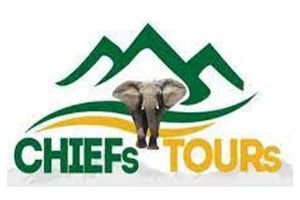KILIMANJARO FAQs
Introduction
This page equips you with the knowledge you need to plan your perfect Kilimanjaro climb. From understanding typical daily routines to packing essentials and staying safe, explore these questions and discover the answers that will transform your Kilimanjaro dream into a remarkable reality.
Frequently Asked Questions
The best route depends on your experience, fitness level, and desired pace. Machame offers scenery and acclimatization, Marangu is shorter but less scenic, and Lemosho is remote and beautiful.
Most climbs take 6 to 8 days, with longer itineraries allowing for better acclimatization. The Rongai Route is one of the longer options at 7 days.
You should be in good physical condition with strong legs for endurance on uneven terrain. Regular hiking and cardio training are essential.
The weather can change rapidly. Expect warm days at lower elevations, with freezing temperatures and strong winds at higher altitudes. Proper layering is key.
Technical climbing skills are not required for most Kilimanjaro routes. However, good hiking experience and mental toughness are crucial.
Most routes offer a mix of camping and hut stays. Camps typically have tents with comfortable sleeping mats. Huts on routes like Marangu provide bunk beds and basic amenities.
Expect fresh, nutritious meals prepared by your guides. Typical dishes include pasta, soups, stews, and local Tanzanian cuisine. Dietary restrictions can often be accommodated.
Costs vary depending on the route, length of climb, operator, and group size. Expect to pay several thousand dollars, with permits and park fees being a significant part of the cost.
Yes, it’s mandatory to climb Kilimanjaro with a certified guide and park rangers. They ensure your safety, provide navigation and expertise, and assist with acclimatization.
Focus on building endurance with long hikes carrying a backpack. Cardio exercises like running or cycling will also improve your fitness for the climb.
Altitude sickness is a common issue caused by rapid ascent. Ascend slowly, stay hydrated, and be aware of symptoms like headache, nausea, and dizziness. Descend if symptoms worsen.
Consult your doctor for the latest recommendations. Vaccinations for yellow fever, Hepatitis A & B, and rabies are generally recommended for travel to Tanzania.
The dry seasons (December-March and June-September) offer the best weather conditions for climbing Kilimanjaro. However, these months can also be busier with more crowds.
Pack layers of warm and waterproof clothing, comfortable hiking boots, a headlamp, sunscreen, sunglasses, and a water bottle. Trekking poles can also be helpful. Click here for our recommended parking list.
Stay well-hydrated by drinking 3-4 liters of water daily. Your guides will advise on proper hydration practices throughout the climb.
Shower facilities are limited on the mountain. Most campsites offer options for a basic wash with a bowl of warm water, while some higher camps may have freezing showers.
Basic camping toilets are available at campsites. Higher camps may have more basic options like digging holes. Always pack hand sanitizer and toilet wipes.You can upgrade your Kilimanjaro climb with a private portable flush toilet, at an extra charge. Discuss this with our travel consultant when you book your Kilimanjaro climb.
Phone service is unreliable on most of the mountain. Some higher camps may have limited reception, but don’t count on it. Enjoy the digital detox!
Your guides are trained to handle minor ailments. For more serious medical issues, they can arrange evacuation down the mountain. Travel insurance is highly recommended.
Tipping is customary to show appreciation for your guides and porters’ hard work. Contact us to discuss our Mount Kilimanjaro tipping policy.
